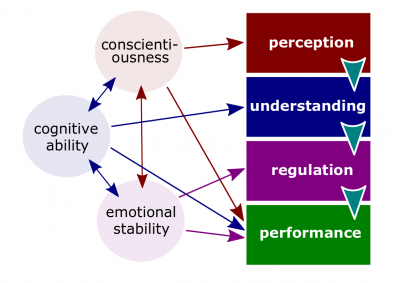Difference between revisions of "Emotional intelligence"
(→Related coursework) |
MariamKhalid (talk | contribs) |
||
| Line 4: | Line 4: | ||
According to [[Organizational Behavior by Robbins and Judge (17th edition)]], | According to [[Organizational Behavior by Robbins and Judge (17th edition)]], | ||
:[[Emotional intelligence]]. The ability to detect and to manage emotional cues and information. | :[[Emotional intelligence]]. The ability to detect and to manage emotional cues and information. | ||
| + | According to [[Management by Robbins and Coulter (14th edition)]], | ||
| + | :[[Emotional intelligence]]. The ability to notice and to manage emotional cues and information. | ||
==Related concepts== | ==Related concepts== | ||
| Line 14: | Line 16: | ||
*[[Communication Quarter]]. | *[[Communication Quarter]]. | ||
| − | [[Category: Septem Artes Administrativi]][[Category: Articles]] | + | [[Category:Management]][[Category: Septem Artes Administrativi]][[Category: Articles]] |
Revision as of 09:25, 3 June 2020
Emotional intelligence (hereinafter, the Ability) is the ability to detect and to manage emotional cues and information.
Definitions
According to Organizational Behavior by Robbins and Judge (17th edition),
- Emotional intelligence. The ability to detect and to manage emotional cues and information.
According to Management by Robbins and Coulter (14th edition),
- Emotional intelligence. The ability to notice and to manage emotional cues and information.
Related concepts
- Emotional dissonance. Inconsistencies between the emotions people feel and the emotions they project.
- Surface acting. Hiding one's inner feelings and forgoing emotional expressions in response to display rules.
- Deep acting. Trying to modify one's true inner feelings based on display rules.
- Mindfulness. Objectively and deliberately evaluating the emotional situation in the moment.
